What Kind of Duct to Use for Bathroom Fan?
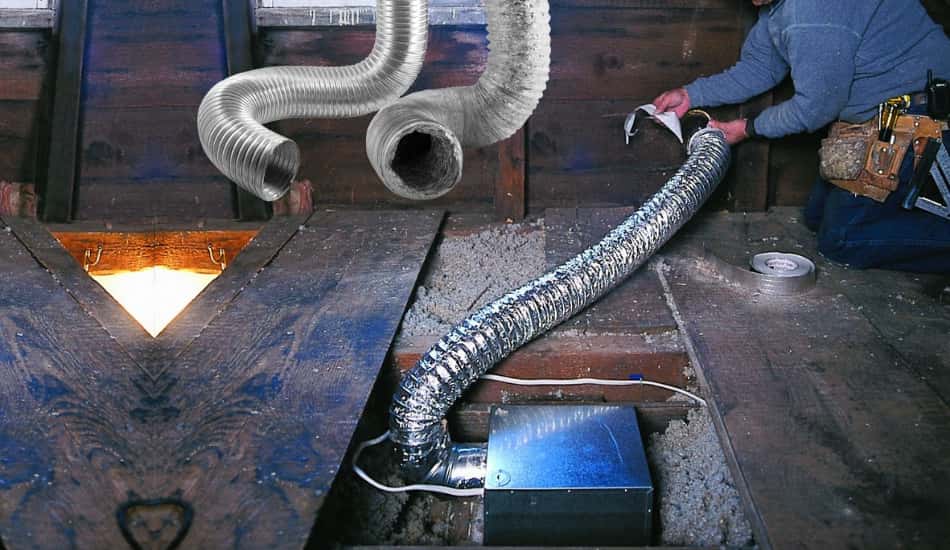
Having good ventilation in the bathroom is very important, especially if you don’t have a window. However, some people think that a bathroom fan is here to control odor control. Some regulations determine the acceptable humidity level in bathrooms and parameters for airflow in all enclosed spaces.
Building codes also determine how ducting should be solved for bathroom fans. Ducting that represents an acceptable solution for bathrooms differs from each state, and each state has its own rules. In this article, we’ll talk about choosing the best duct for your bathroom. So, let’s start!
So What Kind of Duct to Use for Bathroom Fan? Most bathrooms often opt for a flexible duct due to its long lifespan. However, a rigid duct moves air better, more efficiently, and can be used over longer distances. The only drawback of the rigid duct is the initial cost. Because of that, try to avoid uninsulated ducts and opt for flexible ducts.
As we have already mentioned, there are two options when we talk about bathroom fan ducts: rigid and flexible. Below we will look at these two options. We will also consider a few more issues related to ducting for bathroom fan; like what fan you should choose, where to vent, uninsulated or insulated. We will start with the flexible duct for the bathroom fan.
For those who want to know more, be sure to read Does a Bathroom Need a Window? Explained.
Flexible Duct for Bathroom Fan
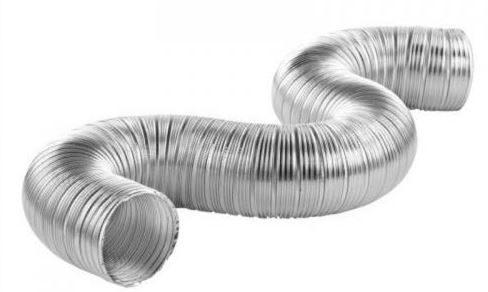
Today, you’ll find that most bathrooms use a flexible duct. However, each duct type has its advantages and disadvantages, and those related to flexible ducts will be discussed below. When we talk about flexible ducts, we can say that they have more advantages than drawbacks, and for that reason, they are most commonly used in bathrooms. However, the question remains: what do rules exactly say about building codes?
Flexible Duct Is Accepted by Building Codes

International Residential Code (IRC) explains exhaust systems that are related to domestic cooking, clothes dryers, bathrooms, toilet rooms, and systems of ventilation for the whole house.” Section M1504 explains exhaust openings and ducts. There is no specific line saying that flexible duct can be used, but the term “flex duct” is stated as a type of duct that is allowable when it comes to duct lengths.
Flexible Duct Materials
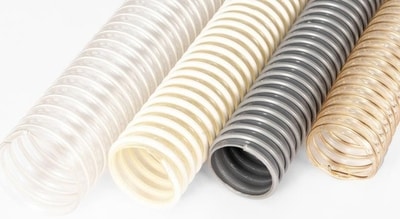
Materials used to create flexible ducts are usually made from metal, plastic, or fiberglass. However, don’t use aluminum ducting which is cheap, as it can break very easily. Commonly, thin aluminum ducts become damaged during the installation. Unfortunately, many homeowners discover this year’s latter when they are faced with damage from moisture in the attic.
Therefore, search for materials that have a protective layer over the aluminum. Aluminum ducts PVC-covered are much more resistant to tearing and also are far simpler to install and insulate because you do not have to fuss about them so much. If aluminum ducting is your choice, then use heavy-duty Flexible Aluminum Ducting from AC Infinity. This model is reinforced by an extra-layer design which ensures much more resistance to cuts, rips, and leaks.
AC infinity is a manufacturer that makes great ventilation products. When you buy a few heavy-duty AC infinity ducts that have a spring-loaded and rubber-sealed damper of high quality, you can be confident and sure that you have efficient, long-lasting, and very quiet ventilation in your bathroom.
Related Article: How To Vent A Dryer In The Middle Of The House
Pros of Flexible Duct

Flexibility is the biggest advantage when it comes to flexible ducts. Here are a few examples of how flexibility can be beneficial when it comes to bathroom fan ducts:
- Ducts can be placed with ease in enclosed spaces.
- It enables duct bending so that it can follow angles. Rigid ducting can do that, so they are not usable without additional joins and attachments. Also, keep in mind that bends are not desirable for ducting, but it is often impossible to avoid them. The flexible duct curve is better to use than a rigid duct with a sharp corner.
Keep in mind that flexible ducting is popular when it comes to bathroom fans also for its low price. You should know that even the most expensive and strong flexible ducting costs much less than any rigid metal ducting. Further, in the case of flexible ducting, you will save money because it is cheaper and easier to install. Also, you will not be required to buy joints and adaptors that are required in the case of rigid ducts.
Cons of Flexible Duct

Having an exhaust ducting will easily remove the moist and warm air from the room and transfer it to the outside. That way, the moisture will not get into your bathroom surface, causing mold, rot, mildew, etc. However, there are 2 situations where the flexible ducting has its drawbacks:
- Friction is Increased
The ridges that are placed on the interior flexible duct walls are creating airflow turbulence. Turbulence is increased by the level where air particles are colliding with the walls of the duct and thereby increases friction. Friction is the most crucial factor that influence all airflow pressure in the duct. Pressure of the duct must be strong enough to keep the moisture and air moving along the line to be released outside.
Incensement of friction causes loss of airflow pressure, and in that case, the duct efficiency is reduced. This causes wall ridges to catch the moist air. This is stopping it from going outside. As airflow pressure gets lower, it is easier for moisture to deposit in the ducts.
- Sagging Duct
If the flexible duct is not set correctly it can sag. The sagging points are additionally stopping smooth airflow, causing losses in pressure, making more friction, and collecting water that should be going outside. Because moisture can easily get into the flexible ducts, they require more cleaning, which requires high maintenance.
Can Insulated Flexible Duct Be Used for Bathroom Fans?
There are two options when it comes to insulated flexible ducts; the first one is to buy already insulated flexible ducting or to purchase flexible ducting. After that, you need to insulate them by yourself. However, that ducting can be difficult to slash. Before you make the purchase, you need to consider the project on which you are working carefully. It is important for you to not leave an extra duct in your attic. It will drastically down-size the entire system’s efficiency.
Duct insulation is very important, and in the end, it isn’t important if the insulation is done by yourself or buy the pre-insulated product. Inside the non-insulated duct, water will condense and start pouring down through the bathroom fan. It will cause annoying dripping and brown stains all over the fan. Also, uninsulated ducts will lead to heat loss all over the openings of the bathroom fan.
Rigid Duct for Bathroom Fan
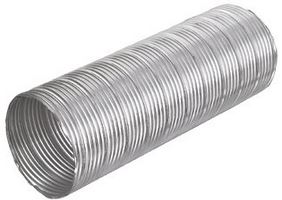
When it comes to venting moisture and air from the bathroom, rigid ducts win as the best option. Now, you surely ask yourself why would anyone then buy a flexible one? There are 2 major downsides when it comes to rigid ducts and we’ll discuss them in a minute. First, let’s see if rigid ducting can be legally used when it comes to bathroom fans.
Rigid Duct Is Accepted by Building Codes

Just like with flexible ducts, there is no specific sentence in Section M1504 that is banding usage of rigid ducting when it comes to bathroom fans. But the term “smooth-wall duct” is stated as a type of duct that is allowable when it comes to duct lengths. As we mentioned before, if your hood is performing the bathroom fan function, you are allowed only to apply rigid stainless steel or galvanized ducting.
Pros of Rigid Ducts

Rigid ducting is manufactured from metal sheets – and because of that, it has much smoother inner walls. These walls cause lower turbulence compared to the rigid walls which are characteristic of flexible ducting. Consequently, less pressure gets lost when it comes to rigid ducts. Because of that, rigid ducting is much more effective and a better alternative for a fan duct in the bathroom.
Even with rigid ducts, moisture will always find the place to collect and be interference. We are talking here about elbows and joins. Rigid ducts can last a very long time, and they are also in the low-maintenance category of products – cleaning is only required occasionally.
Cons of Rigid Ducts

- They are Expensive
Rigid ducting is a much more expensive option, and when it comes to hiring a professional to install them, the labor cost is also much higher because its complexity of installation.
- Complicated Installation
When it comes to installing a ducting by yourself, the first thing you sohuld know is that this process is a very challenging undertaking. Additionally, once you install it, moving it later is also not a simple task. Rigid fan ducts for bathrooms cannot be installed between these obstacles or simply bend. To turn corners and redirect them, joints and elbows need to be used. Note that the more joints and elbows you use, the higher the turbulence will be.
- Noise
In comparison to flexible bathroom ducts, a vent system made only from rigid ducts will be noisier. Outside noise and other rooms is transferred easily through the metal ducts. That is why it is common that the last few duct feet are set up by using a flexible duct even when your main choice is a rigid duct. Two main disadvantages when it comes to rigid ducting are the difficult installation and the expense. But rigid duct for bathroom fan still stays the best option if non of these two bothers you.
Is Insulated Duct Good For Bathroom Fans?
Ducts for bathroom fan must be insulated. One of the many things, why you have to insulate your exhaust ducts in the bathroom, is that by doing so you are preventing condensation to form on the duct. By doing this, you will prevent bathroom fan dripping. Any duct can be insulated. We recommend you do so by the usage of cotton duct wrap. Do not forget, that insulation is installed above the fan so that heat loss can be prevented.
4” or 6” Duct for Bathroom Fan
The size of the duct rely by fan capacity of the bathroom. It is OK to Install a bigger duct than the size of the fan port. Note, that you have to stay away from adapters. When fan housing comes with a connection of 6” you should opt for a duct of 6”, even in situations when your fan comes in a package with an adapter of 4”. When duct length goes over 25 feet, no matter what the fan size is, you should install 6”.
Can Bathroom Fan Be Vented From The Soffit?
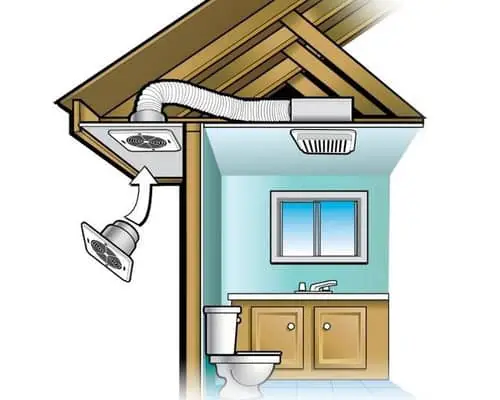
It is normal to vent a fan in the bathroom through the soffit, but in the end, you have the last word as a homeowner. If roof of your home has some holes, venting through the soffit is recommended as the best option.
Advantages of venting fan in the bathroom using the soffit are:
- It is usually the quickest route.
- Your roof integrity stays preserved.
- The chance that back-drafting will occur is eliminated.
When it comes to venting the bathroom fan by using the soffit, you must choose the right material for duct, duct size, ducting route, duct slope, and insulation. Installation process also must be done properly to avoid the moist and warm air from going back from the soffit into the attic. It is very important to do the venting always through the soffit, never ever into it!
When This Is a Bad Idea?
Fan should never be vented in a bathroom within 10 feet as opposed to the intake point of soffit air. If you do that there is no purpose in venting because the moist and warm air outside can get back into your attic.
Is It Reuqired For a Bathroom Fan to Vent Outside?
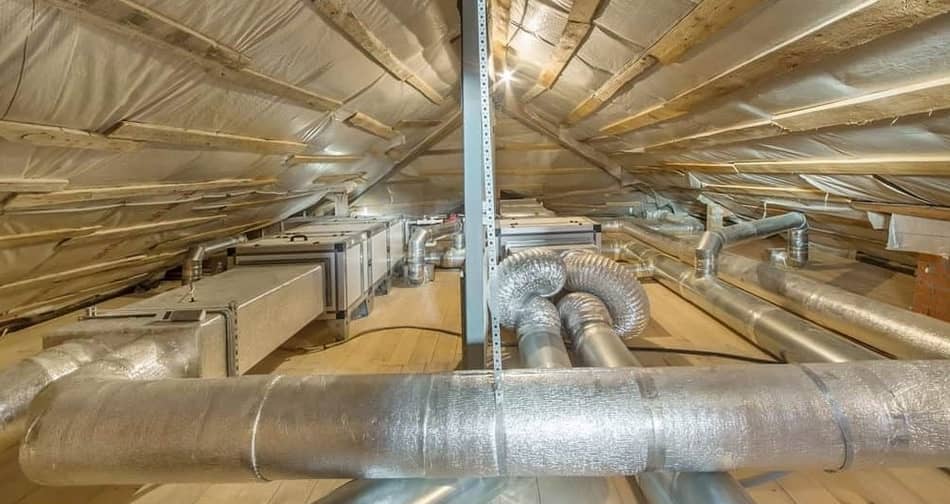
When it comes to bathroom fan, it always needs to vent the air from the house to outside. The whole purpose of having a bathroom fan is for it to remove bad odors and moisture from the bathroom to prevent mildew and mold to grow. Mildew and mold are not just bad to watch; they are dangerous for human health. When bathroom fan is vented right into the attic, soffit, or crawlspace, it is basically moving the possibility of mildew and mold forming from one area to another.
This essential condition posed for venting is also stipulated in many building codes, the IRC including, in section M1505.2 that says:
“All exhausted air from toilets and bathrooms can’t be recirculated inside of a residence and circulated to the different dwelling units. It must be exhausted straight from the house to outside.”
On the market, there are available ductless bathroom fans. You should know that they are only creating airflow in the very room; they will not fulfill a bathroom fan’s primary purpose which is to remove moisture.
